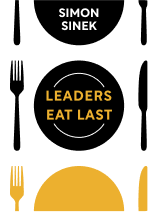

This article is an excerpt from the Shortform book guide to "Leaders Eat Last" by Simon Sinek. Shortform has the world's best summaries and analyses of books you should be reading.
Like this article? Sign up for a free trial here .
What do oxytocin and cortisol have to do with leadership? How does cortisol hinder collaboration and cause division amongst employees?
In his book Leaders Eat Last, Simon Sinek explains how cortisol and oxytocin affect leadership. Cortisol creates a toxic work culture where employees see each other as competitors rather than collaborators. Oxytocin, on the other hand, fosters empathy and trust, which encourages collaboration and inspires innovation.
Here’s how cortisol and oxytocin affect the workplace culture in your organization, according to Sinek.
Cortisol Hinders Collaboration and Innovation
According to Sinek, oxytocin and cortisol play a key role in leadership. Cortisol hinders collaboration and innovation because it makes people feel unsafe. It sends your body into survival mode when you’re threatened. It shuts down any non-essential bodily functions so your brain can identify the threat as quickly as possible.
(Shortform note: Shutting down non-essential bodily functions may help you identify danger, as Sinek suggests, but what if you need to focus on something other than your unsafe feelings? For example, if your child gets lost in a busy mall, you need to be calm and focused to find them, despite the cortisol in your system. If you’re panicking, you may just run around the mall without a plan and not find your child. If you’re calm and focused, you can contact mall security and retrace your steps. To bypass the fight-or-flight response, experts suggest taking deep breaths, acknowledging your feelings of worry and fear, and asking yourself whether these feelings are helpful. This forces you to consider your situation logically, which can reduce cortisol levels and make it easier to focus.)
One of the functions cortisol impedes is oxytocin production. This means when employees feel stressed or unsafe at work, they lack the oxytocin that would otherwise encourage them to feel empathy and form trusting relationships, which are the keys to effective collaboration.
(Shortform note: The competition caused by a lack of oxytocin that Sinek warns about can make a workplace miserable. Competitive subordinates may belittle their coworkers, take credit for other people’s work, or act like a manager even if they’re not one. These are likely attempts to get attention and support. Experts suggest dealing with a competitive person in the workplace by being direct: Confront the competitive individual and explain how their behavior is impacting you and their peers. Focus on the competitiveness as a problem that you’ll solve together to encourage teamwork rather than defensiveness. In addition, show them that there’s no need for competition by continuing to support and encourage them.)
Cortisol also prevents your employees from innovating: It impedes their ability to focus on things other than identifying whatever made them feel unsafe. When humans identify a physical threat, our bodies release adrenaline, which Sinek implies flushes the cortisol from our systems and alleviates our feelings of insecurity. Unfortunately, most of modern humanity’s threats are abstract, like having too much responsibility at work. When your employees can’t identify a physical danger, their bodies don’t release adrenaline and the cortisol stays in their systems longer, distracting them from creating innovative solutions to problems.
(Shortform note: Sinek presents losing creativity as the main downside to having cortisol in your system for a long time. However, arguably a more pressing problem is the physiological effects of this cortisol response. As cortisol builds in your system, your body gets stuck in ‘production’ mode: Instead of listening to your brain’s signals to stop producing the stress hormone, your body keeps pumping out cortisol. This state of chronic stress damages your immune system and puts you at higher risk for depression.)

———End of Preview———
Like what you just read? Read the rest of the world's best book summary and analysis of Simon Sinek's "Leaders Eat Last" at Shortform .
Here's what you'll find in our full Leaders Eat Last summary :
- Why a leader must prioritize her subordinates’ needs above her own
- How empathy and support can be strong managerial tools
- Why you must see your customers, suppliers, and employees as people






